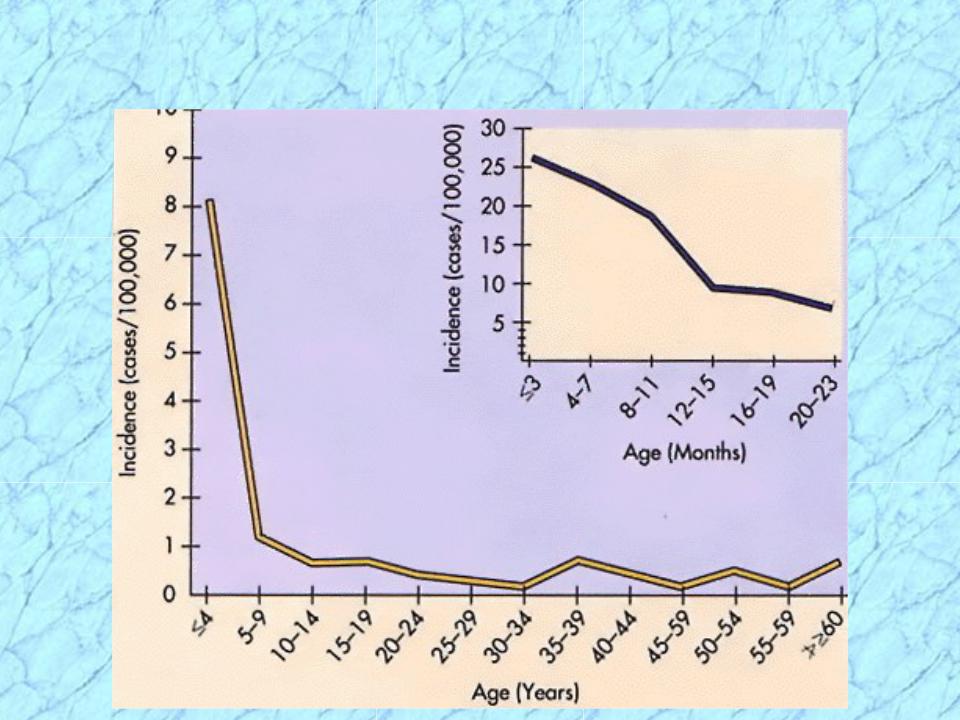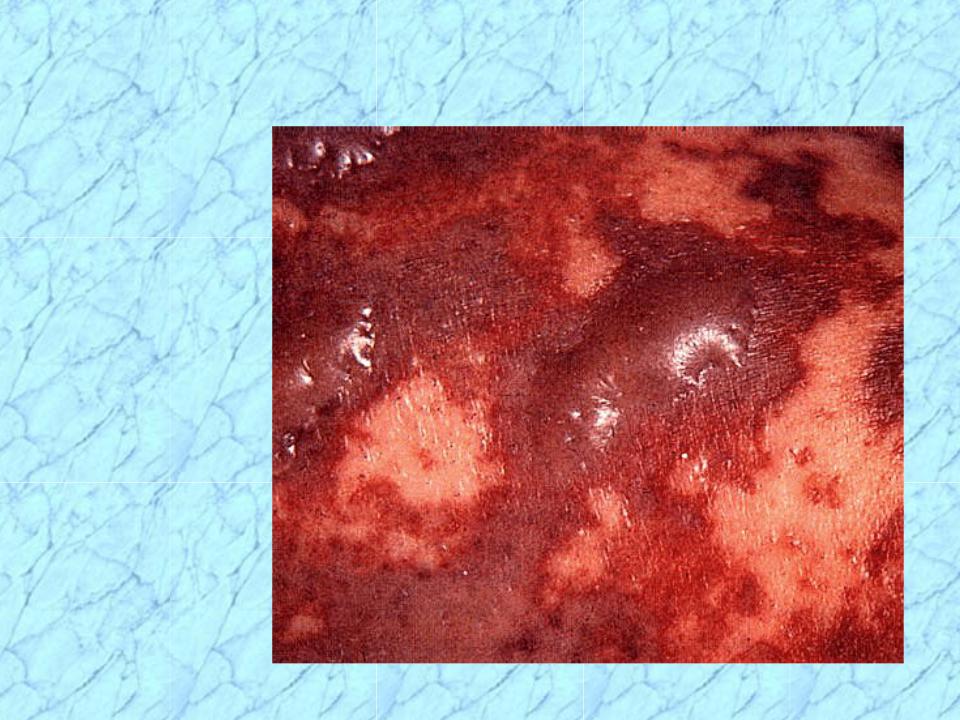
- •Neisseria
- •General Characteristics of
- •Important Human Pathogens
- •Neisseria Associated Diseases
- •Differential Characteristics of Commonly Isolated Neisseria spp.
- •Neisseria gonorrhoeae
- •General Overview of
- •Neisseria gonorrhoeae in Urethral Exudates
- •Epidemiology of Gonorrhea
- •Incidence of Gonorrhea in USA
- •Differences Between Men & Women with Gonorrhea
- •Differences Between Men & Women with Gonorrhea (cont.)
- •Differences Between Men & Women with Gonorrhea (cont.)
- •Gonorrhea
- •Pathogenesis of Neisseria gonorrhoeae
- •Gonococcal Virulence Factors
- •Gonococcal Virulence Factors (cont.)
- •Laboratory Characterization
- •Prevention & Treatment
- •Analytic Performance of Different Laboratory Detection Methods for Nesseria gonorrhoeae
- •See Handout on Sensitivity & Specificity of Diagnostic Tests
- •Analytic Performance
- •Analytic Performance
- •Neisseria meningitidis
- •General Overview of Neisseria meningitidis
- •Diseases Associated with Neisseria meningitidis
- •Neisseria meningitidis in Cerebrospinal Fluid
- •Epidemiology of Meningococcal Disease
- •Age Distribution of Meningococcal
- •Pathogenesis of Meningococcal Disease
- •Skin Lesions of Meningococcemia
- •Immunogenicity of Neisseria meningitidis
- •Laboratory Characterization of
- •Prevention and Treatment of
- •REVIEW
- •General Characteristics of
- •Neisseria Associated Diseases
- •Review of
- •General Overview of
- •Summary of Neisseria gonorrhoeae
- •Summary of Neisseria gonorrhoeae
- •Epidemiology of Gonorrhea
- •Females
- •Pathogenesis of Neisseria gonorrhoeae
- •Virulence Factors Associated with Neisseria gonorrhoeae
- •See Handout on Sensitivity & Specificity of Diagnostic Tests
- •Analytic Performance
- •Analytic Performance
- •Review of
- •General Overview of Neisseria meningitidis
- •Summary of Neisseria meningitidis
- •Summary of Neisseria meningitidis
- •Diseases Associated with Neisseria meningitidis
- •Epidemiology of Meningococcal Disease
- •Age Distribution of Meningococcal
- •Pathogenesis of Meningococcal Disease
- •Immunogenicity of Neisseria meningitidis

Age Distribution of Meningococcal
Disease in USA
Lacking maternal antibody

Pathogenesis of Meningococcal Disease
Specific receptors (GD1 ganglioside) for bacterial fimbriae on nonciliated columnar epithelial cells in nasopharynx of host
Organisms are internalized into phagocytic vacuoles, avoid intracellular killing in absence of humoral immunity and complement system (patients with late complement deficiencies are particularly at risk)
Replicate intracellularly and migrate to subepithelial space where excess membrane fragments are released
Hyperproduction of endotoxin (lipid A of LOS) and blebbing into surrounding environment (e.g., subepithelial spaces, bloodstream) mediates most clinical manifestations including diffuse vascular damage (e.g., endothelial damage, vasculitis (inflammation of vessel walls), thrombosis (clotting), disseminated intravascular coagulation (DIC)

Skin Lesions of Meningococcemia
NOTE: Petechiae have coalesced into hemorrhagic bullae.

Immunogenicity of Neisseria meningitidis
Following colonization of the nasopharynx, protective humoral immunity develops against the same or closely related organisms of the same serogroup, but not against other serogroups
Bactericidal activity of the complement system is required for clearance of the organisms
Cross-reactive protective immunity acquired with colonization by closely related antigenic strains and with normal flora of other genera (e.g., E. coli K1); progressive disease can occur in absence of serogroup-specific immunity

Laboratory Characterization of
Neisseria meningitidis
Large numbers (e.g., >107cells/ml) of encapsulated, small, gram-negative diplococci (flattened along adjoining side) and polymorphonuclear leukocytes (PMN’s) can be seen microscopically in cerebrospinal fluid (CSF)
Transparent, non-pigmented nonhemolytic colonies on chocolate blood agar with enhanced growth in moist atmosphere with 5% CO2
Oxidase-positive
Acid production from glucose and maltose but not from other sugars

Prevention and Treatment of
Meningococcal Disease
Penicillin is drug of choice for treatment in adjunct with supportive therapy for meningeal symptoms
•Increasing MIC mediated by genetic alteration of target penicillin binding proteins is being monitored)
•Chloramphenicol or cephalosporins as alternatives
Chemoprophylaxis of close contacts with rifampin or sulfadiazine (if susceptible)
Polyvalent vaccine containing serogroups A, C, Y, and W135 is effective in people older than 2 years of age for immunoprophylaxis as an adjunct to chemoprophylaxis
•Serogroup B is only weakly immunogenic and protection must be acquired naturally from exposure to cross-reacting antigens


REVIEW
of
Neisseria

General Characteristics of
Neisseria spp.
Aerobic
Gram-negative cocci often arranged in pairs (diplococci) with adjacent sides flattened
(like coffe beans)
Oxidase positive
Most catalase positive
Nonmotile
Acid from oxidation of carbohydrates, not from fermentation
REVIEW

Neisseria Associated Diseases
(ophthalmia neonatorum)
REVIEW
